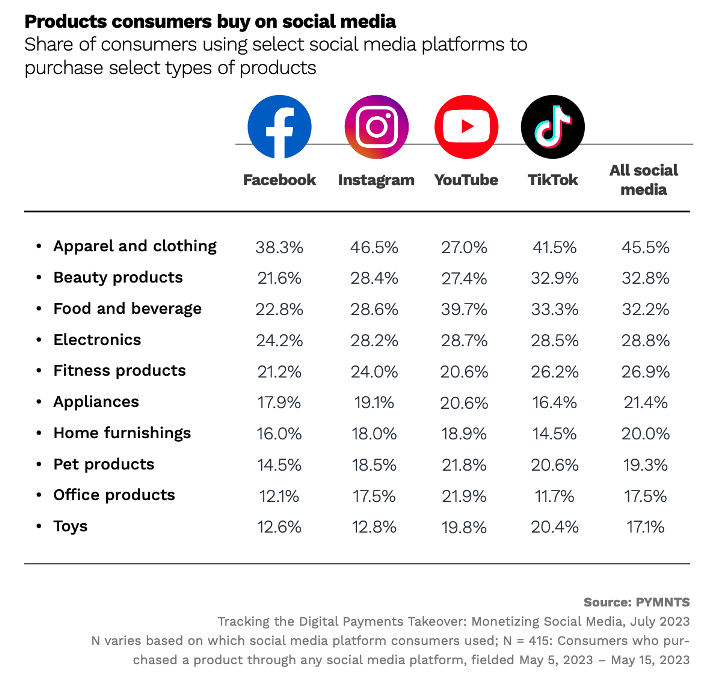Brands Target Consumer Food Spend on Social Media

Consumers are using social media to buy products, and apparel, beauty, and food and beverage are the three categories they shop the most.
A total of 45.5% of consumers buy apparel on social media, followed by beauty products at 32.8% and food and beverage at 32.2%, according to “Tracking the Digital Payments Takeover: Monetizing Social Media,” a PYMNTS Intelligence and Amazon Web Services (AWS) collaboration. The study investigated how consumers expect their use of digital shopping and payments options to increase in the future.
The use of social media platforms for shopping seems to be growing across all retail categories. In the case of food and beverage, 40% of shoppers said they are considering buying these products on social media in the next 12 months. As a result, new businesses, from top global players to small local brands, have the opportunity to sell to these consumers.

Opportunities Through Partnerships
Many Generation Z consumers tap social media to make decisions about where to eat, and their preferred digital platform is TikTok.
Krispy Kreme is investing in digital to grow penetration among younger consumers by partnering with influencers.
“Our brand continues to grow and over-index with valuable younger consumers, with 18- to 34-year-olds now representing 40% of our U.S. consumer base, up from 33% a year ago,” Krispy Kreme Global President and Chief Operating Officer Josh Charlesworth said on an earnings call with analysts in November. “This is a big contributor to the success of our Strawberry Glazed Doughnut partnership with Hailey Bieber, which sold out quickly every day we ran it in early September.”
Corporate collaborations between adjacent brands can play a role in fostering cross-sales opportunities in the social media landscape. For instance, Kellogg Company, the owner of Pringles chips brand, announced in September a partnership with The Caviar Company to launch the “Crisps and Caviar Collection.” The collaboration was inspired by a TikTok trend of pairing the snack with caviar, which reached over 10 billion views.
There are also opportunities on other social media platforms. Data showed that YouTube is the preferred digital platform for food and beverage over TikTok and Instagram, with nearly 40% of consumers saying they used the video platform to buy these products in the 30 days before being surveyed.
As such, some grocers are tapping shoppable content in video as part of an effort to interact with customers and drive conversion. Earlier this year, supermarket chain The Fresh Market expanded its partnership with video commerce solution provider Firework, creating a retail media network featuring live, shoppable video content, such as recipes and tutorials, on the grocer’s digital channels.
Food brands are uniquely positioned due to the popularity of recipe content on social media, which creates opportunities to reach consumers beyond traditional eCommerce platforms.
